CHINASE | ENGLISH
bottom
NEWS
Immortal Legend! ‘Tiangong II’ was scheduled to retire!
Tiangong II space laboratory had completedall extended missions. It was scheduled to be controlled todeorbit and re-enter the atmosphere layer on July 19, and a small amount of debris was expected to fall in the planned safe sea area in the South Pacific, according to the China Manned Space Engineering Office.
Launched on Sept 15, 2016, the space lab has worked on orbit over 1,000 days, much longer than its 2-year designed life.
Tiangong II space laboratory, an improved version of backup Tiangong I target spacecraft, is composed of an experiment module and a resources module. Shanghai Academy of Spaceflight Technology took charge of Tiangong II’s power subsystem,docking subsystem, measurement and control communication subsystem, overall circuit (electric cable network), resources module structure and the work of general assembly.
Tiangong II is “busy” during two years in the space
The space lab has a total length of 10.4 meters, a largest diameter of 3.35 meters and a takeoff weight of 8.6 tons. After its solar panels are unfolded, its wingspan is about 18.4 meters wide. It has functions of rendezvous and docking with the Shenzhou manned spaceship and the Tianzhou cargo spacecraft, in-orbit refueling, and conducting experiments of space science and technology.
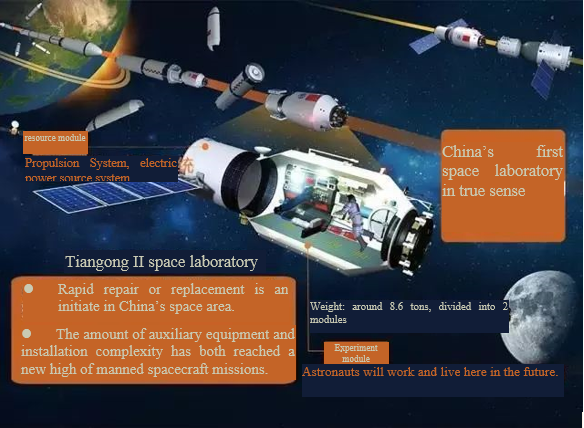
Tiangong II has begun busy work mode since it was on orbit:docking with the Shenzhou Ⅺmanned spaceship; completing astronauts' medium-term stay; assessment of related technologies for life, health and job security for astronauts in long-term flight; and “greeting” Tianzhou I, nicknamed “Tiangong’s express delivery little brother” by Chinese media, and verification of in-orbit refueling technology… It's one thing to say that Tiangong II is not only busy and effective, but also fulfills the important mission of the development of China's space station.
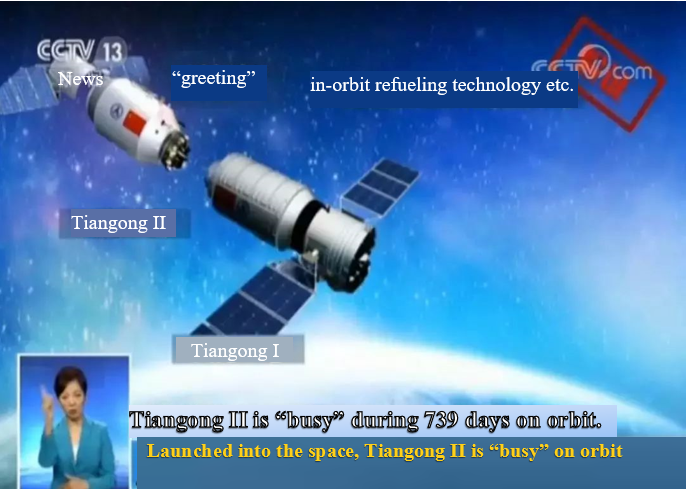
Identify earth with ‘piercing eyes’ Watch the sea, land, atmosphere
The high-performance aerospace "digital camera" customized for the "Tiangong II" space laboratory is installed on the "belly" of the observation surface of the Tiangong II. It can realize earth-observing imaging from multiple orientations following the change of the Tiangong II’s flight angle.
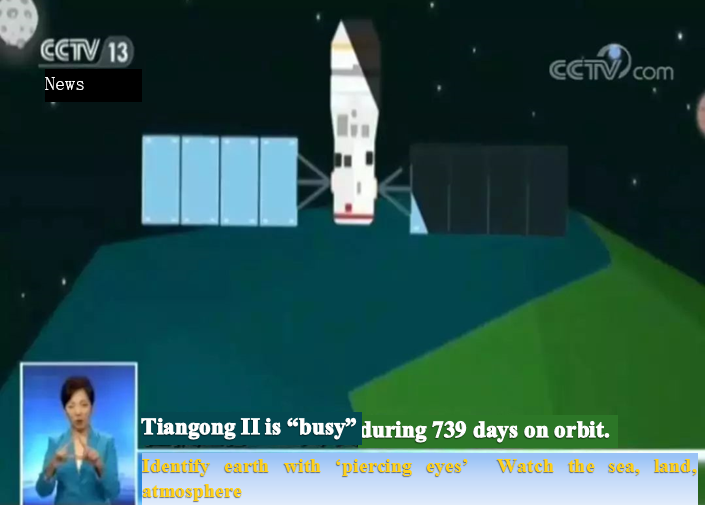
It has a high signal-to-noise ratio, the ground resolution reaches 100 meters, and the details of the ground scenes seen are more elaborate. These new types of detection images will be widely used in various fields such as weather forecasting, atmospheric detection, climate change, agricultural production, marine disaster prevention, and navigation safety.
Complete Space plant cultivation from seed to seed
With the development of manned spaceflight, how to cultivate plants in space is a problem that must be solved by human beings living in space for a long time.
There is a mini incubator with suitable temperature and controllable light on the Tiangong II. In the past, the experimental period of space plant cultivation was no more than 20 days, and only the experiment of seedling stage could be carried out. This is the first complete space plant cultivation experiment in China from seed to seed.
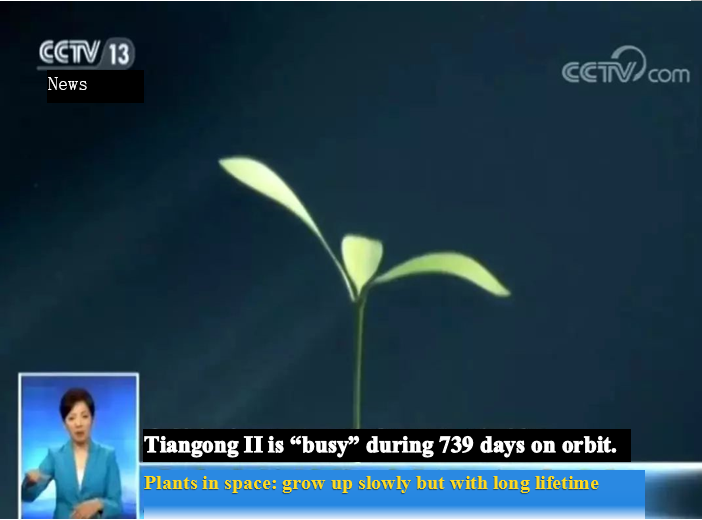
If Tiangong I was the “entry-level” experimental aircraft of the space laboratory, Tiangong II is a small space laboratory in real sense. It aims to solve the problem of space application of certain scale and short-term care, which boasts working and testing conditions.
China officially enters ‘Space station era’
China formulated a three-step development strategy for manned space in the 1990s: first step, astronaut’s flight; second step, multi-manned and multi-day space flight, the astronauts engage in extravehicular operations, the rendezvous and docking of the spacecraft and the space capsule, and the launch of short-term manned space laboratory; third step, the building of a space station to solve the problem of large-scale and long-term manned space applications.
The Long March II FT1 carrier rocket rose from the Jiuquan Satellite Launch Center and launched Tiangong I into the orbit on September 29, 2011.Subsequently, Tiangong I ushered in Shenzhou IX and Shenzhou X, completed a series of technical test verification of the spacecraft’s control and management skills of the assembled modules and astronaut on-orbit resident support, and obtained a large amount of valuable data information and application results. It completed its mission and entered the central part of the South Pacific on April 2, 2018.
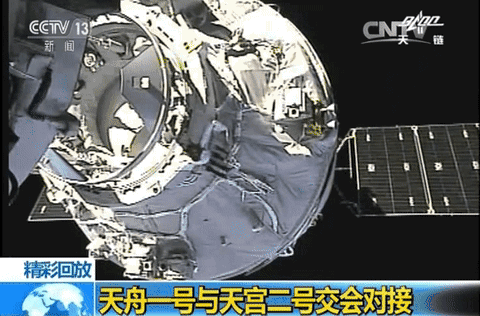
Nowadays, with the end of the Tiangong II’s mission, the third step of China Manned Space Engineering Program, the space station project, will also be fully launched, and China will officially enter the "space station era."
NEWS MORE
China's space station, ‘Tiangong’
China's first space station is called “Tiangong”. Its basic configuration includes Tianhe core module, Wentian experimental module I and Mengtian experimental module II, each of which has a scale of 20 tons.
During the operation of the space station, the Shenzhou manned spacecraft provides occupant transportation and is provided supply by the Tianzhou cargo spacecraft. The space station has a design life of 10 years and can be extended by maintenance and repair as needed. The rated passengers are 3 people, and the number can be up to 6 in short-term during the group rotation.
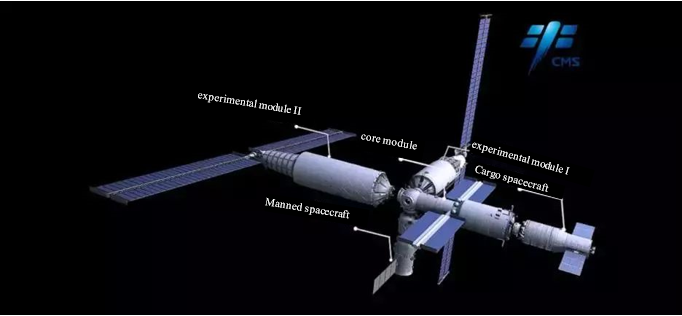
The Tianhe module is utilized for unified management and control of space stations and astronauts' lives, which boasts 3 docking interfaces and 2 berthing interfaces. The berthing interfaces are used to form a space station assembly for the Wentian module, Mengtian module and Tianhe module. Shenzhou spacecraft, Tianzhou spacecraft and the sky and cabin assembly.The docking interfaces are used for the Shenzhou spacecraft, the Tianzhou spacecraft and other aircrafts to access the space station.
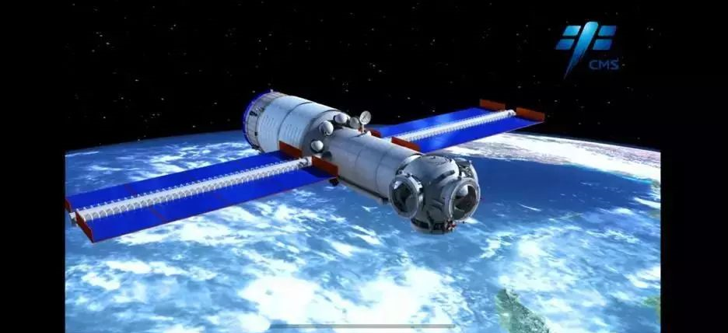
At the same time, the space station planned the experimental rack in the sealed cabin, the extravehicular exposure experimental platform and the XunTian optical module of the common rail flight, and supported the implementation of scientific research and application projects in the fields of space astronomy, space life science and biotechnology, microgravity basic physics, and space materials science.
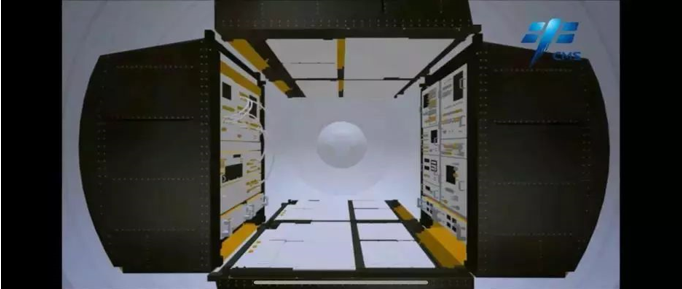
“The starry sky is vast, and the exploration has no limits”. In the mission of the future space station, China's manned space will actively carry out international exchanges and cooperation in equipment development, space application, astronaut training, joint flight and space medicine in a more open manner. China will share the achievements of manned space development with all countries in the world, especially developing countries.China will contribute more Chinese wisdom, Chinese programs, and Chinese power to promote the development of the world's manned space technology and promote a community with a shared future for mankind to expand into space.
Source:CCTV News
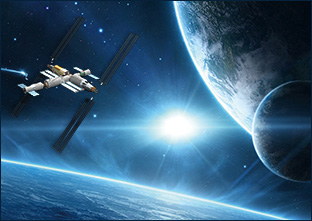
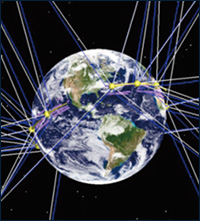
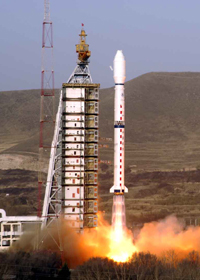
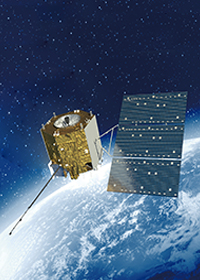

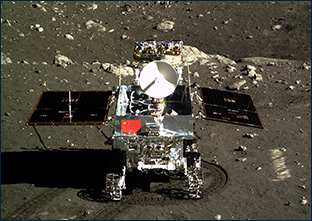
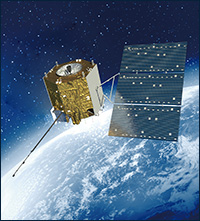

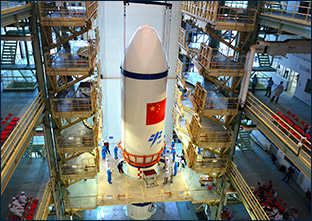



 DOWNLOAD
DOWNLOAD E-MAIL
E-MAIL